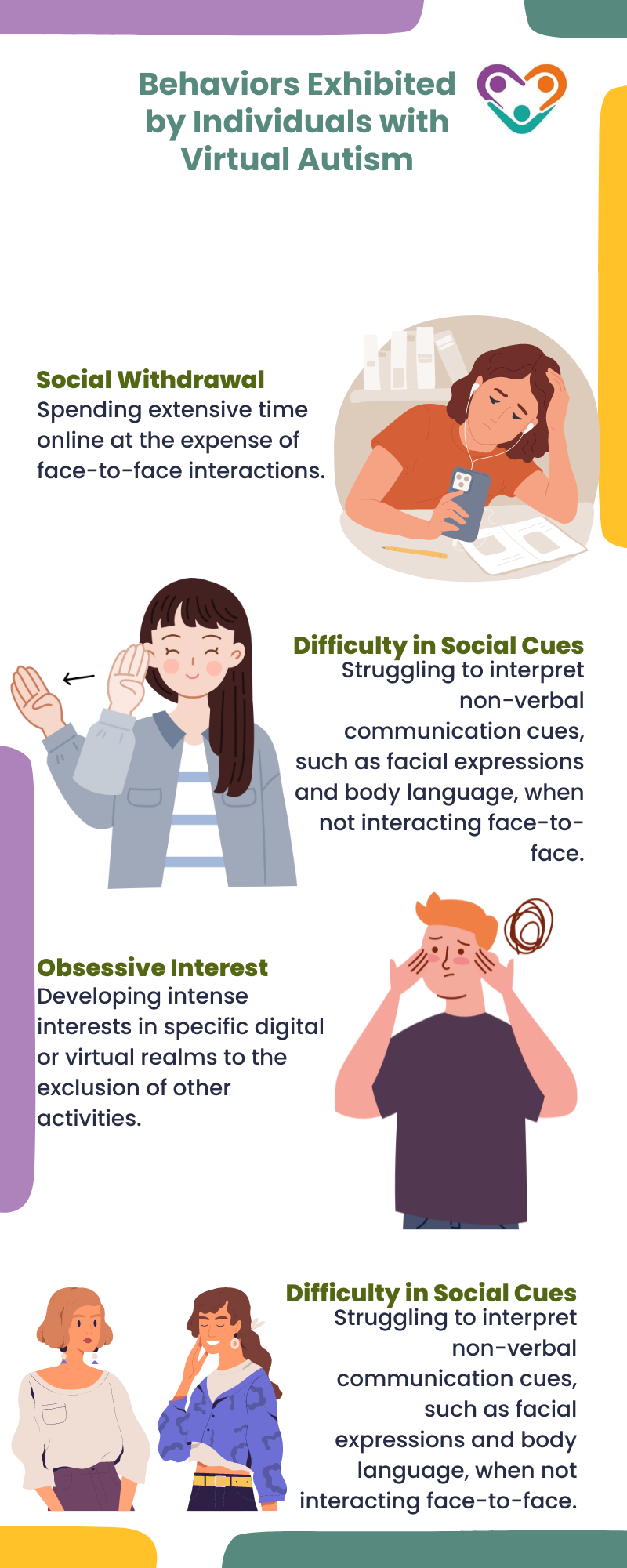In recent years, the term “virtual autism” has emerged to describe a phenomenon where individuals, particularly children and adolescents, exhibit behaviors akin to autism spectrum disorders (ASD) in the context of excessive digital or virtual interactions.
This concept raises important questions about how technology influences social behavior and development, and whether it can mimic or exacerbate traits typically associated with autism.

What is Virtual Autism?
Virtual autism refers to a set of behaviors observed in individuals who excessively engage with digital devices and online environments, leading to challenges in social interaction and communication similar to those seen in individuals with autism spectrum disorders. These behaviors may include:

The Role of Technology in Social Development
Technology, particularly social media, online gaming, and virtual reality, has become pervasive in modern society, significantly altering how individuals interact and communicate. While technology offers numerous benefits, such as enhancing connectivity and providing educational opportunities, excessive use has raised concerns about its impact on social skills and mental health.
Studies have shown that prolonged digital interaction can reshape neural pathways involved in social cognition, potentially affecting how individuals perceive and respond to social cues in real-life settings.
This phenomenon is particularly concerning during critical developmental stages, such as childhood and adolescence, when social skills are actively forming.
Parallels with Autism Spectrum Disorders
Autism spectrum disorders are characterized by deficits in social communication and interaction, alongside restricted interests and repetitive behaviors. Research suggests that excessive digital engagement may exacerbate these traits or create similar patterns of behavior, leading to the concept of virtual autism.
A study highlighted that children who spend more time on screens tend to have poorer social skills and communication abilities compared to their peers who engage in more face-to-face interactions. This correlation underscores the potential impact of digital environments on social development.
Unlike face-to-face interactions, digital environments often lack the nuanced social cues essential for learning social skills, such as empathy and cooperation. This deficiency can hinder the development of interpersonal relationships and emotional regulation, crucial aspects of social development.
Moreover, the instant gratification and structured nature of digital interactions may not adequately prepare individuals for the unpredictability and spontaneity of real-world social encounters.
As a result, excessive digital engagement may contribute to difficulties in adapting to social norms and navigating complex social dynamics outside of virtual realms.

Mitigating the Risks
While concerns about virtual autism highlight potential risks associated with excessive digital engagement, it’s essential to recognize that technology itself is not inherently detrimental. Rather, it’s the manner in which technology is used that determines its impact on social development.
Educational initiatives and parental guidance play critical roles in promoting healthy technology use among children and adolescents.
Strategies such as setting screen time limits, encouraging offline activities, and fostering face-to-face interactions can help mitigate the risks associated with Virtual Autism while promoting balanced social and digital lifestyles.
Virtual autism describes a pattern of behaviors resembling autism spectrum disorders that arise from excessive digital engagement. While technology offers unprecedented opportunities for connectivity and learning, its overuse can impede social development, particularly in children and adolescents.
By understanding the impact of digital environments on social skills and implementing effective strategies to promote balanced technology use, we can support healthier social interactions and development in the digital age.
Through ongoing research and awareness, we can navigate the evolving landscape of technology while prioritizing the social and emotional well-being of individuals in both virtual and real-world contexts.
As we continue to explore the intersection of technology and social behavior, it is crucial to remain vigilant in monitoring its effects and adapting our approaches to ensure positive outcomes for future generations.
Sources:
https://www.autismparentingmagazine.com/children-virtual-autism
https://www.ncbi.nlm.nih.gov/pmc/articles/PMC10979776
https://www.sunshinepreschools.com/blog/virtual-autism-concern-for-toddlers-in-digital-age



